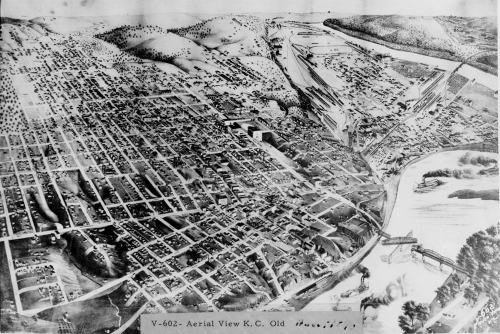This Week In Kansas City History: In For the Landing

In 1838, the town of Westport stood near the western edge of the American frontier and served as a disembarking point for traders following the Santa Fe Trail to present-day New Mexico, then a part of Mexico. To reach Westport from the east, traders traveled by river to a natural rock landing near the junction of the Kansas and Missouri Rivers and then trekked four miles south to Westport. The river landing was a promising location for a town of its own, which prompted 14 investors to form the Town of Kansas Company and purchase the land from the Gabriel Prudhomme estate for $4,220 on November 14, 1838. Prudhomme had been a fur trader associated with the French Chouteau family, who were some of the earliest settlers in the area.
John Calvin McCoy, son of Baptist missionary Isaac McCoy, was the primary organizer of the group of 14. When the McCoy family first moved to the area in 1830, Isaac focused on his ministry to the Shawnee Indians who had been forced into the area after the Indian Removal Act of 1830. Meanwhile, John, a trained surveyor, opened a general store, marked roadways nearby, and cleared a trail to the river landing. The subsequent growth of trade, businesses, and settlers in what he called “West Port” spurred the incorporation of Westport in 1833.
Already the recognized founder of Westport, McCoy seized the opportunity to found another town at the riverfront in 1838 and encouraged the other 13 investors. They chose the name “Kansas” because of the nearby Kansa Indians and Kansas River. Today, Kansas City’s location in Missouri causes confusion, but in 1838 it was not a foreseeable problem because the land that would become the territory and then the state of Kansas was then simply known as “Indian Territory.”
Read the rest of the story at KC History.